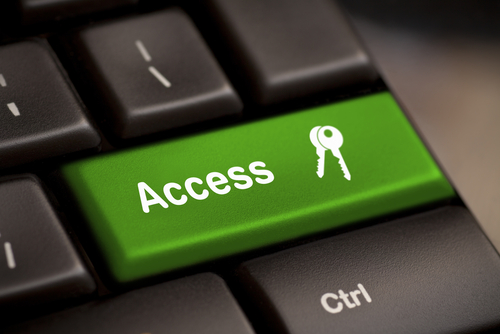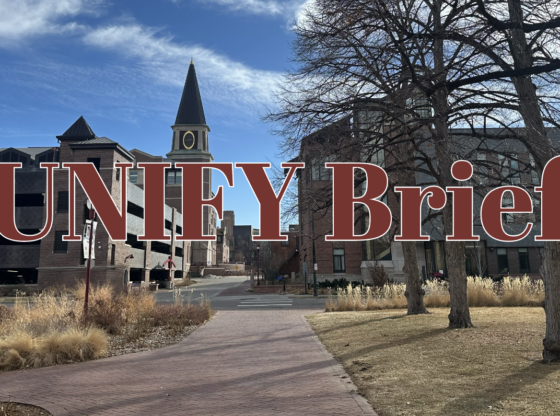“Reality dictates that conformance to WCAG 2.0 Level AA [digital accessibility] guidelines may be an undue burden due to the nature of the [web] content, the purpose of the resource, the lack of accessible solutions, or an unreasonably high administrative or financial cost necessary to make the resource meet that goal.”
These arguments against implementing digital disability accessibility in online platforms have been made by countless other institutions–and criticized as ableist by disability rights advocates.
They also comprise a sentence on the University of Denver’s Web Content Accessibility Implementation Guidelines webpage.
Along with the rest of the world, higher education institutions have increasingly integrated technology into courses and teaching methods. Being Generation Z, current students are expected to keep up with these rapid changes relatively easily. But the transition hasn’t been smooth for everyone. Digital accessibility has not advanced at the same rate as technology in general, leaving people with disabilities, including those at DU, struggling to adapt to new computer programs and systems.
In recent years, DU has made significant changes to the digital platforms they use, according to Dave Thomas, an academic counselor in the Learning Effectiveness Program and a professor at University College. Thomas, who is totally blind, usually uses a screen reader—which reads text aloud in a synthetic voice and allows him to navigate websites with keystrokes—to access information online. Since he first came to DU 16 years ago, however, accessibility has been on “a fairly steep decline.”
“Interfacing with digital platforms and computer usage is more difficult and aggravating” than just five or ten years ago, Thomas said. That was before DU contracted out third-party digital platforms like EVERFI or Civitas Learning, which are notoriously obstinate about web accessibility. These systems don’t interface with his screen reader and have made it difficult for him to complete tasks such as locating students’ grades, assisting with class registration and posting alerts about students of concern on the “Inspire” student success platform. He often needs the help of a sighted colleague, leaving him highly frustrated.
William Casson, DU’s Accessibility Specialist who is blind and also uses a screen reader, agrees that at least one subcontractor, Civitas Learning, has been an issue. “The typical reaction [to accessibility complaints] is [Civitas] not being responsive,” he said. “They’ve been resistant to making it a priority or to really wanting to do anything about it,” leaving employees with disabilities “disgruntled.”
But there’s a major barrier to fixing the issue. Even though the platforms and content are often incompatible with his screen reader, they are “technically accessible according to the letter of the law,” Thomas said.
Those laws are Sections 504 and 508 of the Rehabilitation Act of 1973 and the Americans with Disabilities Act of 1990, both of which protect people with disabilities from discrimination, including that occurring through inaccessible web design.
It’s the threat of lawsuits, which have increased 15% yearly since 2018, that motivates institutions to implement at least some small degree of digital accessibility.
For Thomas, though, these changes remain inadequate and frustrating. “Anyone with the skillset to make digital platforms can incorporate [the World Wide Web Consortium accessibility guidelines] pretty easily into web design, but they just choose not to,” he explained.
This does not mean that DU completely disregards the importance of web accessibility. University digital accessibility guidelines exist, having been drafted by Ellen Hogan, the Office of Teaching and Learning’s Accessibility Technologist for Teaching and Learning, Casson and others previously, though the issue of compliance remains. DU is also holding panels for Global Accessibility Awareness Day on May 18.
Inaccessibility is blatant to the average user. Major offices, including Admissions and Advancement, repeatedly upload new web and social media content that lacks basic accessibility features such as sans serif font, adequate color contrast and closed captioning.
The implementation process itself appears to be a major contributing factor. DU utilizes a “self-serve” approach to managing digital accessibility, with some departments viewing it as in the realm of professional development and others putting it in the hands of office coordinators who might prioritize beauty over access. A brief assessment using Accessibility Checker and the WAVE Web Accessibility Evaluation Tool revealed that essential DU websites ranged from 41% to 75% in their accessibility scores.
But it isn’t just department heads and office coordinators who don’t understand web accessibility and struggle with the decentralized system.
Every faculty member uses Canvas in their own way, which could be a result of the sudden shift to online teaching during the COVID-19 pandemic. All too often Canvas becomes a dumping ground of files.
For the most part, inaccessibility isn’t a result of malicious intent. The faculty Hogan works with are typically receptive to her suggestions and had not considered any elements of their course a digital access barrier. She believes any resistance usually stems from a place of guilt and defensiveness at being accused of discrimination, with very few faculty members considering academic accommodations as being extra work. “They don’t know what they don’t know [in regard to making accessible content],” she said.
Casson concurs. Unlike Hogan, he doesn’t interact with faculty or students as part of his job, but he’s found DU’s administration to be generally open to implementing his recommendations.
Not everyone has had a positive experience. Thomas says he’s faced inflexibility, apathy and “excuse-making” from people when he’s reported a digital platform as inaccessible. “They’ll say they can’t do anything about it, that it’s a third-party vendor and they’re under a contract,” he remarks. “And contractual relationships with vendors will be extended, even though their systems are inaccessible.”
Casson and Hogan recommend that if the University of Denver wants to improve the situation, it has to dispel a common misconception about digital accessibility: that it only benefits people with disabilities.
“I come at [conversations with faculty] from an angle that [digital accessibility] enhances the quality of a course for all students,” Hogan said. Closed captions or transcripts, for instance, Casson explained, would help students in loud places watch videos.
Canvas is another example. Even though 100% of faculty have a Canvas shell, it’s difficult to navigate and only a small percentage of courses are usable by all students. “It would be good for there to be a standard operating procedure where there has to be a Home page, the syllabus has to be in the Syllabus tab, etc.,” she said. “It shouldn’t feel like every time a student enrolls in a class they have to learn how to use Canvas again.”
Hogan can’t educate all faculty on digital accessibility though, as her position is currently temporary and she’s the only person at DU solely supporting faculty in implementing accessible course design. Casson is in a similar situation. He’s the first and only person to have the responsibility he’s been given: to check all university websites for accessibility concerns. Both feel they would greatly benefit from working alongside other individuals with like positions—or even a centralized team—to ensure they assist the DU students, faculty and administration optimally.
For now, Hogan, Casson and Thomas agree that DU continues to rely on a reactive rather than a proactive system. Digital accessibility concerns have fallen on students, faculty and staff with disabilities to report. DU is struggling to ensure complete equal access and is creating unnecessary barriers for countless individuals. That shouldn’t be the case in the rapidly evolving 21st century.
As Hogan said, “Thinking about the needs of [disabled] students enhances our integrity. It helps us align with our mission of serving the public good.”











